Since the Razer Phone's announcement in 2017, we've seen a new subgroup of phones emerge. Gaming phones are now a thing, leading to companies like ASUS creating phones that are thoroughly optimized for the mobile gaming experience. And with their second iteration, they perfected it.
ASUS released the ROG Phone last year. They took their expertise with PC gaming and applied it to the phone, using Snapdragon 845 chips from the highest bin and creating accessories that made it unfair to play games with people using "regular" smartphones. But ASUS was plagued by the same problem the entire subgroup deals with: gaming phones don't appeal to non-gamers. With the sharp edges, RGB light, and loud design, gaming phones are a bit much.
ASUS learned from their errors when creating this year's ROG Phone II. While not ignoring gamers, ASUS made the phone more appealing to the masses. The hardware and software is designed with both groups in mind. And while the ROG Phone II still might be dismissed by a few, it will be hard for many to ignore.
ROG Phone II Highlights
The ASUS ROG Phone II is the gaming phone for everyone. This phone has some of the best hardware you can find with 12 GB of RAM and 512 GB of UFS 3.0 storage. The screen is a 6.59-inch 120 Hz AMOLED, a first on a smartphone.
Many of the first ROG Phone's accessories are back, including the dual-screen and air cooler for an improved experience. And for the first time, ASUS is allowing you to choose which skin you use on your phone, the gaming-centric ROG Gaming UI 2.0 or stock Android ZenUI 6.0.
Jump to a section: Dates | Storage | Price | Body | Basics | Software | Skin | Display | Performance | Battery | Front Camera | Rear Camera | Audio | Media Formats | Sensors | Connectivity | Security | Box Includes
Important Dates
ASUS announced the ROG Phone II on July 22, 2019. Preorders started on September 23, 2019, with the phone shipping out a week later on the 30th. Currently, it's available at B&H Photo and Mobile Advance.
- Release date: September 30, 2019 (US)
- Preorder date: September 23, 2019
- Announced: July 22, 2019
Storage Capacity
The ROG Phone II will come in one storage option, 512 GB. It uses UFS 3.0 storage, a new standard that more than doubles the previous standard's read and write speeds. This means games install faster and load quicker.
- Storage available: 512 GB (UFS 3.0)
- Expandable storage: no
Price for Everything
The ASUS ROG Phone II is available for $899.99. For context, that is $200 cheaper than last year's model with the same storage size, and it's cheaper than other flagship phones such as the Samsung Galaxy Note 10+ and the Apple iPhone 11 Pro Max.
- Price: $899.99
Body
Similar to most modern smartphones, the ROG Phone II has a glass back housed in an aluminum frame. For the US model, it will come in matte black, helping to avoid the fingerprints the glossy black China version will deal with. The back logo is also an RGB light which can be controlled via an app. It is protected using Gorilla Glass 6, which means it can handle multiple drops from around 3 feet.
- Frame: aluminum, glass (Gorilla Glass 6)
- Finish: black glare
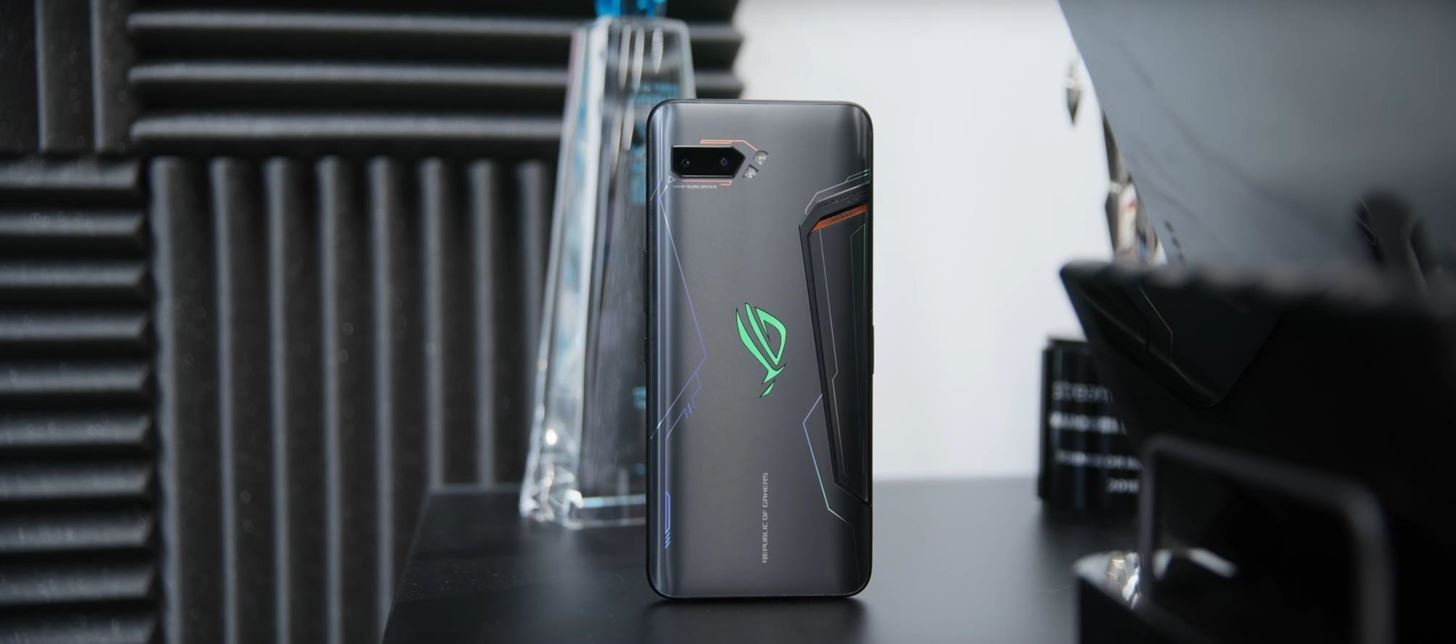
Basics
The ROG Phone 2 doesn't have an IP rating. Likely with the second port on the side and additional vent on the back cover, an IP68 rating wouldn't be possible. Be aware this is both a tall and heavy phone. For context, It is taller than the Sony Xperia 1, which has a 21:9 aspect ratio. It's only 0.8 oz lighter than the Samsung Galaxy Fold with its dual screens, so this isn't meant for those looking for a small, light phone.
- Height: 6.73 inches
- Width: 3.06 inches
- Depth: 0.37 inches
- Weight: 8.47 ounces
- Dust/water resistance: n/a
- Supported carriers: AT&T, T-Mobile
- Infrared blaster: no
As with most Android phones, ASUS doesn't release information about the relative humidity, operating altitude, and nonoperating temperature of their device. We know that its operating temperature is 32° to 95°F because this is the standard for all smartphones.
- Operating temp: 32º to 95º F
- Nonoperating temp: Unknown
- Relative humidity: Unknown
- Operating altitude: Unknown
Software
The ROG Phone II is running the latest version of Android, 9 Pie. Android 9 Pie was a much more significant change than many realize, especially under the surface. Thanks to this version of Android, the ROG Phone II is much more secure with better protection against malicious apps using the camera and mic in the background, hackers monitoring browsing history, and so much more. There are more than 10 new changes to security in Android 9 Pie and over 40 changes overall.
ASUS is currently taking applications for a closed beta program for Android 10. You must meet the following requirements:
- Own a ROG Phone 2 (ZS660KL).
- Be an active member of the ZenTalk forums.
- Be willing to share your phone's identification details, including IMEI and serial number.
- Be willing to diligently test the beta releases and report your findings in a proper format.
If you meet these requirements, you can sign up here to try to get one of the limited number of slots in the closed beta. For those who don't get it, this is still great news, as it means Android 10 is just around the corner.
- Version: Android 9.0 Pie (Android 10 coming soon)
Skin
When ASUS announced the ZenFone 6, they introduced the world to their new skin, ZenUI 6. This update strips down most of the bloatware found in the previous version of ZenUI, giving it a stock Android feel. The result is one of only a handful of skins which offer an enhanced stock experience, similar to OnePlus' acclaimed UI.
ASUS is offering you a choice between this version of ZenUI and ROG Gaming UI 2.0. If you are a gamer (or prefer last year's skin), use the ROG Gaming UI — but if you are casual gamer (or prefer the stock Android look), use ZenUI. This small change will have a massive impact, as it makes this phone more accessible to non-gamers.
- Version: ROG Gaming UI 2.0 and ZenUI 6.0


Display
Here is where the ROG Phone II shines. A 6.59-inch, 2340 x 1080 AMOLED display, nothing special there. But what if I told you it has a 120 Hz refresh rate? And 240 Hz touch sampling rate, which means it reads touches at double the refresh rate as the screen for smoother scrolling. Impressed yet? There's more.
The ROG Phone II has a 1 ms response time, so each input you make is executed immediately. The display is 10-bit HDR and has an average Delta E rating of less than 1 (Delta E is a measurement of display's deviation from a reference color, with lower being better). It is covered with Gorilla Glass 6 for ultimate protection. This combination of specs makes this the best screen to game on, period.
- Screen size: 6.59 inches
- Screen resolution: 2340 x 1080 pixels
- Total pixels: 2,527,200 pixels
- Pixel density: 391 ppi
- Screen type: AMOLED
- Notch: no
- Screen-to-body ratio: 80.3 percent
- Aspect ratio: 19.5:9
- Minimum brightness: Unknown
- Maximum brightness: 600 nits
- Refresh rate: 120 Hz (240 Hz for touch-sensing)
- Color temp: Unknown
- Color gamut: 108 percent DCI-P3

Performance
Last year, ASUS asked Qualcomm for speed-bin processors, processors which Qualcomm found to perform the best while overclocking. ASUS then overclocked these processors to give the ROG Phone better performance than contemporaries with similar specs.
This year, Qualcomm did the hard work for them. Qualcomm just announced the Snapdragon 855+, an overclocked version of their latest SoC. The CPU is overclocked from 2.84 GHz to 2.96 GHz, a modest update. However, the GPU is updated from 585 MHz to 672 MHz, a 15% increase, and a major improvement to gaming as a whole.
How does overclocking help? Well, the ROG Phone II will render higher frame rates and more complex graphical effects than its competition. And assisting all of this is 12 GB of RAM and 128 or 512 GB UFS 3.0 storage.
- Memory: 12 GB RAM
- Processor: Qualcomm Snapdragon 855+
- Chip size: 7 nanometer
- CPU frequency: 2.96 GHz (1x Gold), 2.42 GHz (3x Gold), 1.80 GHz (4x Silver)
- CPU cores: 8 (4 Gold + 4 Silver)
- GPU: Adreno 640 @ 672 MHz
- GPU cores: 4

Battery
You're probably wondering with all that power, has long does it last? Well, a day and a half with normal usage thanks to its 6,000 mAh battery. It also has two USB-C ports, with each port capable of Quick Charge. The bottom port can charge using Quick Charge 3.0 and Power Delivery 3.0. However, the best port is the side since most games are in landscape, allowing you to continue gaming while charging. This port is capable of Quick Charge 4.0 for even faster charging. In the box, it comes with a 30 W Quick Charge 4.0 charger.
- Battery: rechargeable lithium-ion
- Capacity: 6,000 mAh, 3.85 volts (23.1 watt-hours)
- Wired charging: yes, Quick Charge 3.0, Quick Charge 4.0 (side port only), USB Power Delivery 3.0
- Wireless charging: no
Front Camera
The front camera is a 24 MP sensor with f/2.2 aperture. It has a 77.9° field of view and supports portrait mode.
- Resolution: 24 MP
- Aperture: ƒ/2.0
- Zoom: no
- Flash: yes, screen flash
- Image stabilization: no
- RAW support: Unknown
- Object detection: Unknown
- Formats: JPEG

Rear Camera
As for the rear cameras, ASUS did make some improvements. It uses the same cameras as the ZenFone 6 (the 48 MP Sony IMX586) as its primary shooter and a 13 MP ultra-wide angle lens (125°). The primary lens uses Quad Beyer technology to combine four adjacent pixels for improved imaging in low light situations. While this does reduce the resolution by 75%, it double the effective pixel size to 1.6 µm. The secondary lens has real-time distortion correction which can be a problem with ultra-wide cameras. These specs will make more than capable shooter for gamers who want to take some photos, but photography isn't their primary usage of their phone.
- Resolution: 48 MP (standard), 13 MP (wide-angle)
- Pixel size: 0.8/1.6 µm (standard)
- Sensor size: 1/2.0" (standard)
- Aperture: ƒ/1.79 and ƒ/2.4
- Zoom: yes, digital
- Flash: yes, Dual-LED
- Image stabilization: yes, EIS
- RAW support: Unknown
- Lens cover: sapphire crystal
- Object detection: Unknown
- Formats: JPEG

Videography is the same as the ASUS Zenfone 6. It supports 4K up to 60 fps on the primary lens and 30 fps on the secondary lens. Slow-motion is available at 720p and 1080p, although the latter is limited to 240 fps. Only EIS is available for stabilization, although it isn't available for slow-motion mode.
- Resolution: 720p, 1080p, and 4K
- Max frame rate: 30 fps for 720p, 60 fps for 1080p and 4K
- Slow motion: yes, 1080p at 240 fps and 720p at 480 fps
- Time-lapse: yes, 4K
- Photos: yes, Unknown
- Zoom: yes, see above
- Flash access: yes, see above
- Image stabilization: yes, see above
- Object detection: Unknown
- Autofocus: Unknown
- Audio: stereo
- Formats: H.264
Audio
Once again, ASUS didn't skimp in the audio department. The ROG Phone II is just one of only a handful that continues to support the 3.5 mm headphone jack. It also has dual front-facing speakers that are even louder than its predecessor. There are dual NXP TFA9874 smart amplifiers for louder but clear sound. It supports DTS:X Ultra for virtual surround sound audio. Using this technology, it can artificially replicate 7.1 surround sound. Its supports hi-res audio up to 24-bit/192 kHz. It also has four microphones which are paired with ASUS Noise Reduction Technology for crisp audio in both voice calls and in-game voice chat.
- 3.5 mm headPhone jack: yes
- Stereo speakers: yes, front-facing
- Mics: 4
- Max speaker volume: Unknown
Media Formats
The ROG Phone II supports the same list of file types supported by the Android OS.
- Audio: MP3, M4A, 3GA, AAC, OGG, OGA, WAV, WMA, AMR, AWB, FLAC, MID, MIDI, XMF, MXMF, IMY, RTTTL, RTX, OTA, APE, DSF, DFF
- Video: MP4, M4V, 3GP, 3G2, WMV, ASF, AVI, FLV, MKV, WEBM
Sensors
Besides the usual set of sensors, the ROG Phone II has AirTrigger shoulder buttons. These "buttons" are pressure-sensitive sides that can act as shoulder buttons in gaming. These buttons can be mapped to touches to free your thumbs for other actions.
- Sensors: In-display fingerprint, face recognition, accelerator, e-compass, gyroscope, proximity sensor, hall sensor, ambient light sensor, ultrasonic sensors for AirTrigger II and grip press, dual vibrators
The ROG Phone II supports dual-frequency for GPS, Glonass, and QZSS. This is only the second phone in the US to support this feature and the only one to support QZSS as well. Dual-frequency allows for more precise location tracking than a single radio, able to accurately track you even when objects are in the way (such as buildings).
- GPS: yes (L1 + L5)
- aGPS: yes
- Glonass: yes
- BeiDou: yes
- Galileo: yes (E1+E5a)
- QZSS: yes (L1+L5)

Connectivity
Like its predecessor, the ROG Phone II has an extra USB Type-C port on the side. This additional port allows for its accessories to attach and for the phone to be powered in the position most games are played. The ROG Phone II is also one of the only phones to support 802.11ad, a Wi-Fi standard that offers fast speeds but needs a direct line of sight between objects. ASUS uses this to improve screen mirroring so you can game on a television with minimal latency.
It is also a Dual SIM Dual Standby phone, which means you can receive calls from either line without the need to designate which SIM is active. When making calls or sending SMS, you will need to select which SIM to send from. Only when you are making a call is the other SIM not active, and that's only until you hang up.
- Wi-Fi: 802.11 a/b/g/n/ac/ad,4x4 MIMO antenna configuration, Wi-Fi Direct support
- Bluetooth: 5 (EDR, A2DP) with AVRCP, HID, PAN, OPP profiles
- NFC: yes
- Cellular: dual nano-SIM
- Port: 2 USB Type-C
- Other: FM Radio
While it lacks the LTE Band 71, it does have all the other bands supported by T-Mobile for full coverage on the number three wireless carrier. In addition, it also supports AT&T cellular bands but lacks LTE Band 30.
- FDD-LTE: (Bands 1, 2, 3, 4, 5, 7, 8, 12, 13, 17, 18, 19, 20, 26, 28, 29, 32, 66)
- TD-LTE: (Bands 34, 38, 39, 40, 41, 46)
- WCDMA: (Bands 1, 2, 3, 4, 5, 6, 8, 19)
- EDGE/GPRS/GSM: (850, 900, 1800, 1900MHz)
Security
Instead of a physical fingerprint scanner, the ROG Phone II uses the ultrasonic in-display fingerprint reader. This version of the technology can be used even when your finger is dirty or wet. There is no other secure method of biometrics available to this phone.
- Fingerprint scanner: yes, in-display (ultrasonic)
- Face scanner: no
- Iris scanner: no
- Manual authentication: password, PIN, pattern, swipe
Box Includes
In the box are a case and a 30 W Quick Charge 4.0/USB Power Delivery 3.0 power adapter. It also includes Aeroactive Cooler II, the cooling unit that helps dissipate heat from the vents on the back.
- ASUS ROG Phone II
- Aeroactive Cooler II
- ASUS ZenEar Pro Hi-Res earphone with microphone
- Transparent case / Aero case
- Type-C to C Cable (120cm)
- Ejector pin (SIM tray needle)
- USB power adapter (30W)
- Documentation (user guide, warranty card)
Accessories
Many of the accessories released for last year's ROG Phone 1 will be returning for ROG Phone II. These won't be the same exact accessories, they'll be new, upgraded versions that are custom fit to the ROG Phone II. Here are a few of the confirmed accessories:
- TwinView Dock II
- ROG Kunai Gamepad
- Mobile Desktop Dock
- WiGig Display Dock Plus

Just updated your iPhone? You'll find new emoji, enhanced security, podcast transcripts, Apple Cash virtual numbers, and other useful features. There are even new additions hidden within Safari. Find out what's new and changed on your iPhone with the iOS 17.4 update.









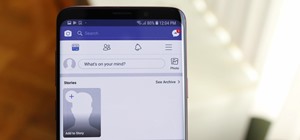
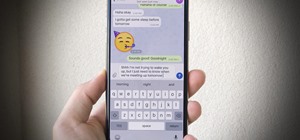
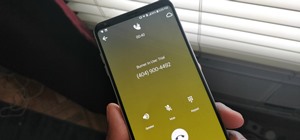
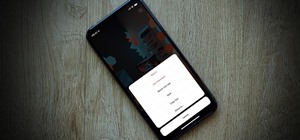
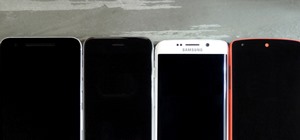
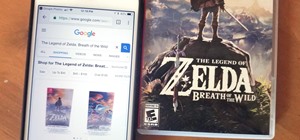
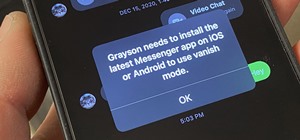


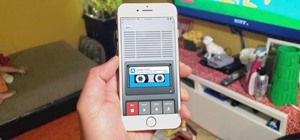
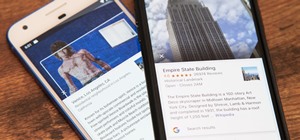

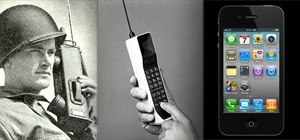
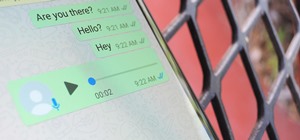
Be the First to Comment
Share Your Thoughts